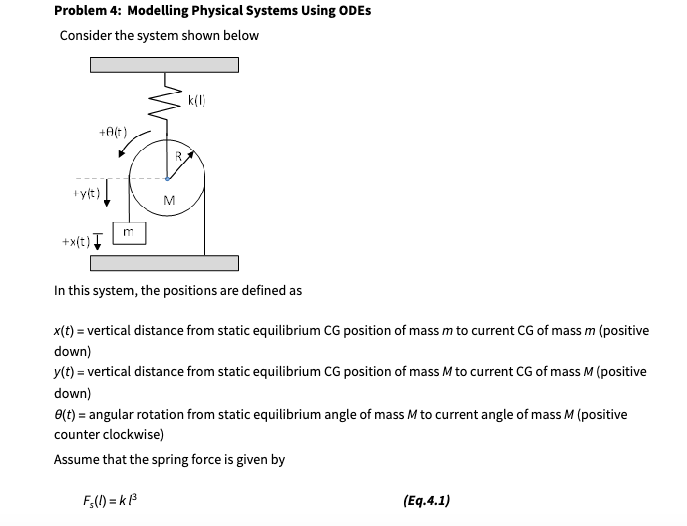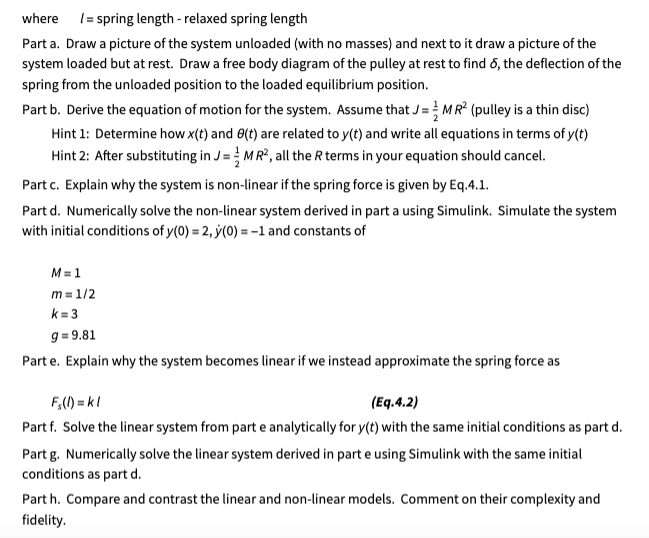Home /
Expert Answers /
Advanced Physics /
problem-4-modelling-physical-systems-using-odes-consider-the-system-shown-below-in-this-system-th-pa223
(Solved): Problem 4: Modelling Physical Systems Using ODEs Consider the system shown below In this system, th ...


Problem 4: Modelling Physical Systems Using ODEs Consider the system shown below In this system, the positions are defined as vertical distance from static equilibrium CG position of mass to current CG of mass (positive down) vertical distance from static equilibrium CG position of mass to current CG of mass (positive down) angular rotation from static equilibrium angle of mass to current angle of mass (positive counter clockwise) Assume that the spring force is given by
where spring length - relaxed spring length Part a. Draw a picture of the system unloaded (with no masses) and next to it draw a picture of the system loaded but at rest. Draw a free body diagram of the pulley at rest to find , the deflection of the spring from the unloaded position to the loaded equilibrium position. Part b. Derive the equation of motion for the system. Assume that (pulley is a thin disc) Hint 1: Determine how and are related to and write all equations in terms of Hint 2: After substituting in , all the terms in your equation should cancel. Part c. Explain why the system is non-linear if the spring force is given by Eq.4.1. Part d. Numerically solve the non-linear system derived in part a using Simulink. Simulate the system with initial conditions of and constants of Part e. Explain why the system becomes linear if we instead approximate the spring force as (Eq.4.2) Part . Solve the linear system from part e analytically for with the same initial conditions as part . Part g. Numerically solve the linear system derived in part e using Simulink with the same initial conditions as part . Part h. Compare and contrast the linear and non-linear models. Comment on their complexity and fidelity.